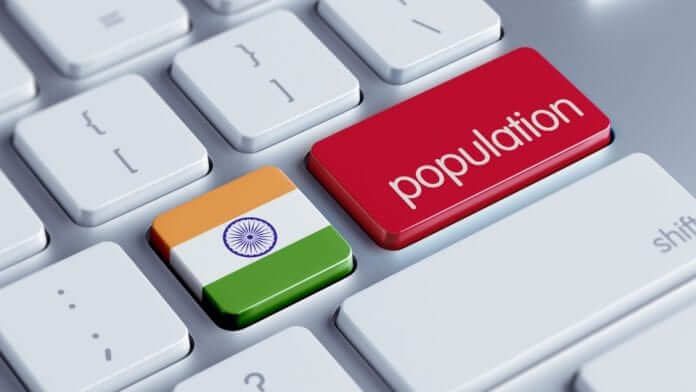This article is written by Bheeni Goyal, from Symbiosis Law School, which discusses the population register and the approach of it around the world.
Table of Contents
Introduction
The population registers are not so well recognized in India and around the world because these registers are not well documented as compared to the other standard system used for keeping and recording the demographic information. The simplified system for maintaining such information is the census, surveys, vital records, etc. These registers mostly run on a municipal basis. Still, the advent of technology and increasing digitized economies has made it easier to centralize the whole date and establish a national register. National Population Registers have become popular and exist in most of the countries, which include India as well. The author in this article has attempted to recognize what are these population registers and the approach of these registers around the world, including India.
Concept of population registers
Defining the term population register can be a little different as various countries have their ways of interpreting and defining the term population registers. The closest to perfect definition of the term population register can be that the population resisters are the one which helps in representing a record of individuals who are inhabitants or residents of (or in more or less sense “belong to”) a republic or a sub-national region. That record classically comprises each person’s name, date of birth, current address, as an external identifier, and a personal identification number (PIN) as an internal identifier. However, this identifier should be unique.
The principal element for any population register is that it should be made compulsory. At the same time, it should have the ability to cover almost the total population of the state. The main challenge, which could be faced in maintaining the proper and detailed information in the population register is the constant changing addresses of the individuals. When such registers are kept in a manual form, it makes it more challenging to keep a check and make changes in the population register. Therefore, it is significant to adopt the computerization process, which will optimize the use of the registers. Further, it will facilitate the consistent updating of the addresses in the registers. This will increase the reliability of the records.
Importance of population registers
The significance of the population registers cannot be undermined. Many countries around the world had adopted and now started to maintain the population registers for keeping the record of citizens. The core resolution for maintaining the population register is to achieve the specific credentials of each individual. It also delivers cumulative data about the total population concerned, which makes it probable to observe and implement a wide array of public management and planning policies for the individuals who belong to different categories. The population register is also beneficial for statistical purposes: it can be used for the purpose of evaluating the size of a population and the socio-demographic structure of the population, as well as population change and its various mechanisms. Additionally, if the structure is fully operational for the constant recording of changes of address, it is the chief foundation of data on migration.
Population registers in India
The census in India can be considered as one of the most extensive administrative exercises in the country, which is responsible for collecting the data on the various economic, demographic, socio-cultural features of the entire population of the nation. The government has realized the growing need for a reliable identification structure for multiple reasons such as internal security, illegal migration, etc. In India, we have the National Population Register (NPR), which is established to collect data or information such as name, date of birth, marital status, the nationality of the citizen, occupation, and permanent address. Under the scheme of the NPR, every citizen would be provided with the unique National Identification Number, which will be referred to as NIN. The development of NPR gave rise to the discussion about the effective implementation of NPR. Some of the people think that it will not be possible to have effective implementation of NPR, after taking into consideration the size of the population of India. Registering the details of every citizen in India will be a complex task. At the same time, some of them believe that maintaining a National Population Register will help in maintaining internal security in the country and will also help in controlling the illegal migration from the other countries.
However, the development of the National Population Register made sure the current census could be simplified, and it would enable the enhancement of the qualitative aspects. This will also allow us to create and conduct the census at more frequent intervals instead of conducting them in every decade. The challenges in generating NPR in our country are enormous. The problem is more significant in vigorously updating the correct information of all the citizens and keeping it live on an existent time basis. Privacy issues have become popular in all these years, especially with the advent of sharing the Aadhar Card Number. This would add to the burden. Keeping up-to-date with the quantum technological innovations in the field of ICT and acclimatizing it optimally would be a combined test. The government of the country is confident that it would be capable enough to overcome all the tests and challenges and would succeed in reaching the objective. Register-based Census, coupled with conducting a regular Census by a house to house listing of the entire population, would be the ideal mix for the probable future.
Approach for population registers around the world
The recommendation by the United Nations, highlighting the significance of the demography of the population registered, by defining the term as- “an instrument for the constant recording of particular information relating to each member of the resident population of a country or area, making it potential to regulate up-to-date data about the size and characteristics of the population at selected points in time.”
Among the European Countries, Iceland was the first country, which set up the first central population register at the national level at those times when the registers were kept manually. It was easy for Iceland to maintain the Central Population Register as the population of Iceland is not more than that of the large town. Considering the step taken by Iceland, there were many other countries that consecutively introduced this concept. Some of the countries include Norway, which introduced the population register in the year of 1968, Sweden in the year 1966, Finland in 1970, etc.
With the introduction of the population registers, the problem of the personal identification number and data connectivity also came into force. The implementation of a central population register requires the use of an identification code for all individuals. In various countries, this identification number had been allotted to the citizen’s long back before the development of the registers. France is considered to be one of the first few countries to have taken this initiative. This initiative can be attributed to a punch card specialist René Carmille, who announced a 12-digit identification number recognized as the “numéro de Français” (French person’s number) with the motive of secretly organizing to remobilize the army, which had been separated under the terms of the 1940 armistice.
In 1946, Sweden adopted the pattern of the identification number and developed the law for the same. It has been realized by the country that the development of the single identification number and maintenance of the population register is significant for eliminating double-counting, improvement in the process of tax collection, etc. Iceland and Denmark are examples of those countries which have adopted the system of the single identification number before the introduction of the population registers. In many states, the population registers are introduced first, and after that, the PIN is introduced and extended to all the administrative registers.
Overall, most of the countries with the system of maintaining the central population registers have initiated the use of unique identification code numbers, and it has become essential. It is this number which is used to transfer anonymized individual data for updating purposes. In Denmark, this system of the unique identification number can be used to link 35 different administrative registers. However, the use of the system is strictly regulated.
However, during the world war, the contention was raised by many countries about the possibility of misusing the system of population registers to dig out the confidential information of the citizens of different countries. The same contention was raised after years in Germany in the year of 1989, pointing that the data could be used against the wellbeing of the citizens to distribute it to the countries with which the host country was at war. The distribution of a personal identification number (PIN), the option of matching a set of individual data with this number, and the centralism of data have given rise to much dispute on data confidentiality and privacy.
The introduction of the population registers and maintaining data in these registers gave rise to fears about data privacy and confidentiality as citizens of most of the countries believed that sharing of the data gave rise to a breach of their confidential information. The most prominent example of data protection among countries is Sweden. It was the first country, as stated before, to use a single code number and was the creator for data protection and privacy through the medium of computers, both nationally and internationally. Subsequently, the European Union also adopted the data protection strategy through the Directive 95/46/EC, which had taken the inspiration from the French 1978 Act (this act was developed for the protection of the automatic processing of personal data). This directive was developed as a framework instrument for the national laws protecting the individuals concerning the handling of the personal data and the free movement of such data. The directive which was issued by the European Union was further transferred into the French Act 2004-801, further making the amendments in the 1978 Act. This French interpretation of the European directive stipulates that an anonymous database should be created that although eliminates the family name but contains a personal identification number, which is indirectly a nominal database, which rules out the possibility of developing a central and a unified database for the population.
Conclusion
The introduction of the population registers all over the world has resulted in the creation of new potentialities for the growth and development of the country by helping in studying the various aspects, which include developing a strategy for the social and economic development, checking the illegal entering of the migrants in-country, etc. This data is used for producing the demographic status, and at the same time, these registers are used for creating the census, especially the one conducted in the year 2010-2011. By using data from central records, statistical offices have significantly simplified their collection work and can now produce a broader range of demographic data, more quickly and, in theory, more reasonably. One of the main problems which almost all countries have raised at some point or other is data protection and privacy. However, all those arguments which focus on the abuse of personal privacy are probable to block the advance of demographic research. In this appeal for the ideal use of central registers, we agree that “register-based research can be done devoid of any risk of unsolicited disclosure of personal data, and it involves no offensive procedures. It is a treasured gift given by the people and paid by them both as taxpayers and as donors of data, to be used for the development and growth of people”.
References
- https://www.sciencedirect.com/topics/computer-science/population-register
- https://www.cairn-int.info/article-E_POPU_1302_0215–central-population-registers-as-a-source.htm#
- https://www.encyclopedia.com/social-sciences/encyclopedias-almanacs-transcripts-and-maps/population-registers
- https://unstats.un.org/unsd/censuskb20/KnowledgebaseArticle10646.aspx
- https://unstats.un.org/unsd/censuskb20/Attachments/2009IND_ISI-GUIDe0ec35bc5f03415f9ad7d5f94d480f4a.pdf
LawSikho has created a telegram group for exchanging legal knowledge, referrals and various opportunities. You can click on this link and join:












